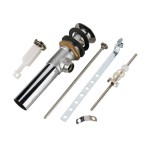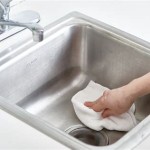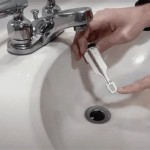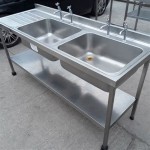36 Inch Bathroom Vanity With Vessel Sink: A Comprehensive Guide
The 36 inch bathroom vanity with vessel sink combination offers a compelling solution for homeowners seeking to maximize style and functionality within a compact space. This configuration is particularly well-suited for smaller bathrooms, guest bathrooms, or powder rooms where space is at a premium but aesthetic appeal remains a significant consideration. Understanding the nuances of this type of vanity, its design options, material considerations, and installation requirements is crucial for making an informed purchase and creating a bathroom that is both practical and visually pleasing.
The combination of a 36 inch vanity and a vessel sink presents a unique design challenge and opportunity. The vanity itself, with its relatively modest width, needs to provide adequate storage while supporting the vessel sink, which sits atop the countertop rather than being recessed. This configuration inherently leads to a higher overall profile, requiring careful consideration of ceiling height and the placement of mirrors and lighting fixtures. Furthermore, the choice of materials for both the vanity and the sink plays a pivotal role in determining the overall aesthetic and durability of the unit.
Maximizing Space and Storage in a 36 Inch Vanity
One of the primary considerations when selecting a 36 inch bathroom vanity is optimizing the available space. Due to the limited width, manufacturers often employ creative storage solutions to compensate. These strategies include incorporating drawers with varying depths, adjustable shelving within cabinets, and pull-out organizers for toiletries and accessories. Some vanities also feature open shelving, which can be used to display decorative items or store frequently used items that need to be readily accessible. The internal layout of the vanity should be carefully evaluated to ensure it meets the user's specific storage requirements.
Another aspect of space maximization involves the overall design of the vanity. Wall-mounted (floating) vanities can create the illusion of more floor space, making a small bathroom feel less cramped. These vanities also simplify cleaning underneath, as there are no legs to navigate around. However, wall-mounted vanities require proper wall reinforcement to ensure they can safely support the weight of the vanity, sink, and any items stored inside. Freestanding vanities, on the other hand, offer a more traditional look and are generally easier to install, but they may take up more visual space.
In addition to the internal and external design, the depth of the vanity is a crucial factor. A shallower vanity, while potentially offering less storage, can be advantageous in extremely tight spaces. Conversely, a deeper vanity provides more countertop space around the vessel sink, which can be useful for placing soap, lotions, or other frequently used items. It is essential to strike a balance between storage capacity, countertop space, and the overall footprint of the vanity to ensure it fits comfortably within the bathroom environment.
Material Considerations for Vanities and Vessel Sinks
The choice of materials for both the vanity and the vessel sink greatly influences the overall aesthetic, durability, and maintenance requirements of the unit. Vanity cabinets are typically constructed from a variety of materials, including solid wood, plywood, MDF (medium-density fiberboard), and particleboard. Solid wood is generally considered the most durable and aesthetically pleasing option, but it is also the most expensive. Plywood offers a good compromise between durability and cost, while MDF and particleboard are more budget-friendly options, but they are also more susceptible to water damage.
The finish applied to the vanity cabinet is equally important. A high-quality finish will protect the underlying material from moisture and scratches, extending the lifespan of the vanity. Common finish options include paint, stain, and laminate. Painted finishes offer a wide range of color choices and can be easily updated, while stained finishes highlight the natural grain of the wood. Laminate finishes are durable and easy to clean, making them a popular choice for bathrooms.
Vessel sinks are available in a wide range of materials, including ceramic, porcelain, glass, stone, metal, and composite materials. Ceramic and porcelain are classic choices that are durable, easy to clean, and relatively affordable. Glass vessel sinks offer a unique and contemporary look, but they require more frequent cleaning to maintain their shine. Stone vessel sinks provide a natural and elegant aesthetic, but they may require special sealants to prevent staining. Metal vessel sinks offer a sleek and modern look, but they can be prone to scratches and water spots. Composite materials offer a blend of durability, affordability, and design flexibility.
The countertop material also plays a crucial role. Common options include granite, quartz, marble, solid surface materials (like Corian), and laminate. Granite and quartz are durable and stain-resistant, making them ideal for bathrooms. Marble offers a luxurious look, but it is more porous and susceptible to staining. Solid surface materials are non-porous and easy to repair, while laminate is a cost-effective option that comes in a wide range of colors and patterns. The thickness and edge profile of the countertop also contribute to the overall aesthetic and functionality of the vanity.
Installation Considerations and Plumbing Requirements
Installing a 36 inch bathroom vanity with a vessel sink requires careful planning and attention to detail. Before purchasing the vanity, it is essential to measure the available space in the bathroom, taking into account the placement of existing plumbing fixtures, doors, and windows. The vanity should fit comfortably within the space without obstructing traffic flow or interfering with other bathroom elements.
Plumbing modifications may be necessary to accommodate the vessel sink. Because the sink sits on top of the countertop, the drainpipe will typically need to be extended or relocated to align with the sink's drain opening. Similarly, the water supply lines may need to be adjusted to connect to the faucet. It is advisable to consult with a qualified plumber to ensure that the plumbing modifications are performed correctly and in accordance with local codes.
The installation process itself typically involves securing the vanity to the wall or floor, connecting the plumbing fixtures, and sealing the countertop to prevent water damage. Wall-mounted vanities require careful attention to wall reinforcement to ensure they can safely support the weight of the vanity and its contents. Freestanding vanities should be leveled properly to prevent wobbling. The countertop should be sealed with a high-quality sealant to protect it from water damage and staining. The faucet should be installed according to the manufacturer's instructions, ensuring that all connections are tight and leak-free.
Selecting the appropriate faucet for a vessel sink is also important. Vessel sink faucets are typically taller than standard bathroom faucets to accommodate the height of the sink. They are also available in a variety of styles and finishes to complement the vanity and sink. It is important to choose a faucet that is compatible with the sink's drain opening and that provides adequate water flow and temperature control. The faucet's reach should also be considered to ensure that the water stream is directed properly into the sink.
Beyond the practical aspects of installation, aesthetics also play a crucial role. Choosing complementary hardware (knobs and pulls) for the vanity can significantly enhance its overall appearance. The placement of mirrors and lighting fixtures should be carefully considered to provide adequate illumination and create a visually balanced space. Decorative accessories, such as towels, soap dispensers, and plants, can add a personal touch and enhance the overall ambiance of the bathroom.
In summary, selecting a 36 inch bathroom vanity with a vessel sink involves careful consideration of space optimization, material choices, and installation requirements. By understanding these factors, homeowners can create a bathroom that is both functional and aesthetically pleasing, maximizing the potential of even the smallest spaces. Thorough research, careful planning, and professional installation can ensure a successful and satisfying bathroom renovation.
Proper planning and execution are key to a successful bathroom update. By carefully weighing the various options and considering the specific needs of the space, a 36 inch bathroom vanity with vessel sink can be a valuable addition to any home.

Modern 36 Inch Vessel Sink Bathroom Vanity Set In Selected Etsy

Cambridge Plumbing 8111b Bn 36 In Bathroom Vanity Set

36 Tennant Brand Modern Style White Beatrice Vessel Sink Bathroom Van Chans Furniture
36 Bathroom Vanity Set Modern W Tempered Glass Vessel Sink Small Side Cabinet

36 Benton Collection Vessel Sink Traditional Style Bathroom Vanity Ak Bentoncollections

Tunuo 36 In W X 22 D 38 7 H Freestanding Bath Vanity White With Engineer Stone Top Vessel Sink Sfhs 1235v2wh The Home

36 Tennant Brand Modern Style White Beatrice Vessel Sink Bathroom Van Chans Furniture

Fresca Fvn6236es Vsl Torino 36 Modern Bathroom Vanity With Vessel Sink In Espresso

W 36 Bathroom Vanity Cabinet Vessel Sink Glass Countertop Mirror Faucet Black Wal Com

Geneva 36 White Oak Single Vanity With Vessel Top Rejuvenation







